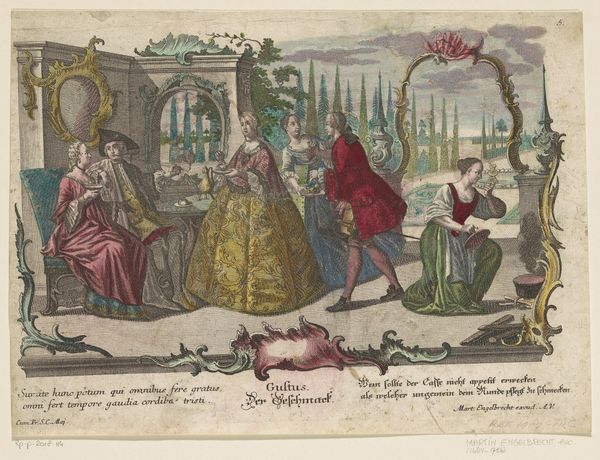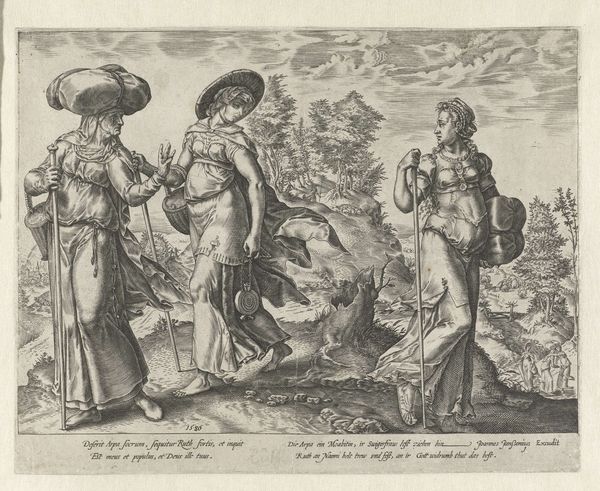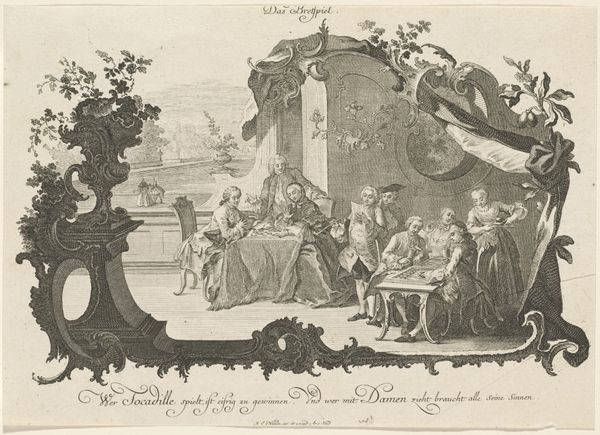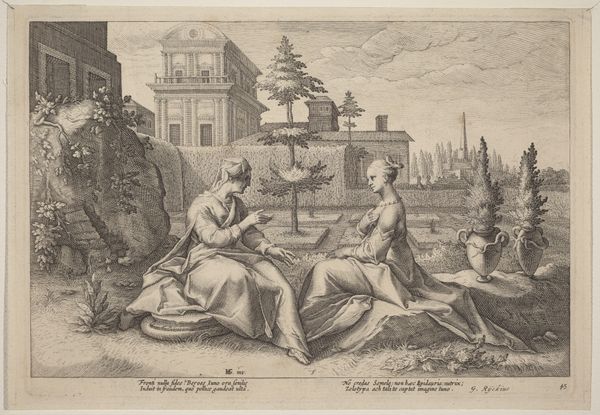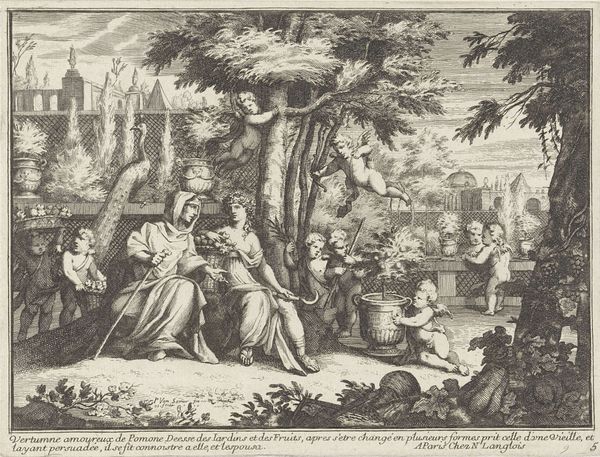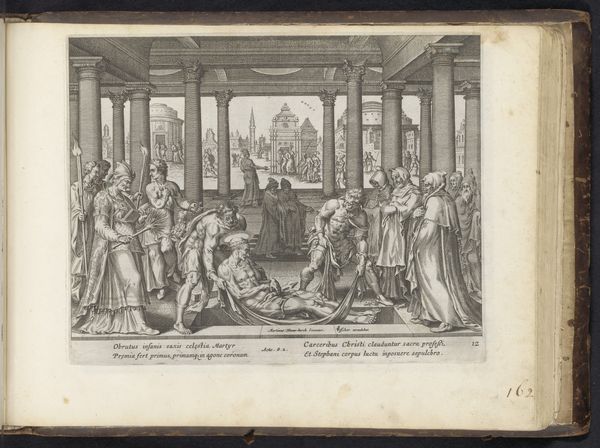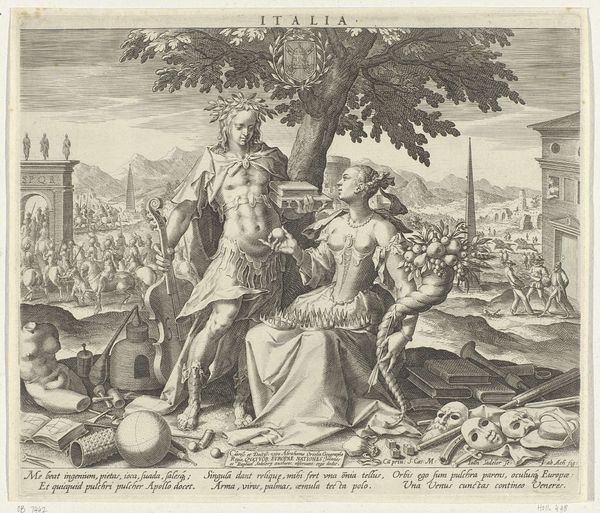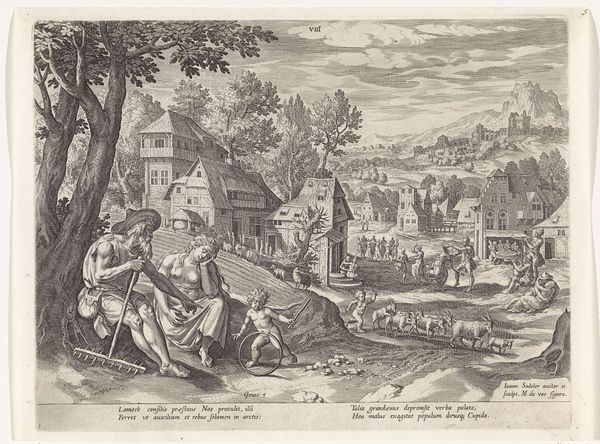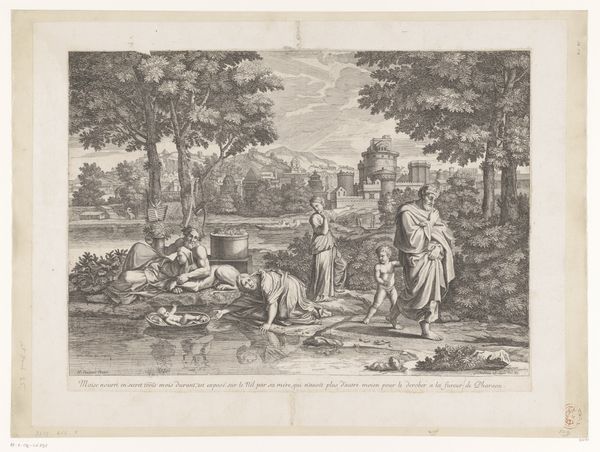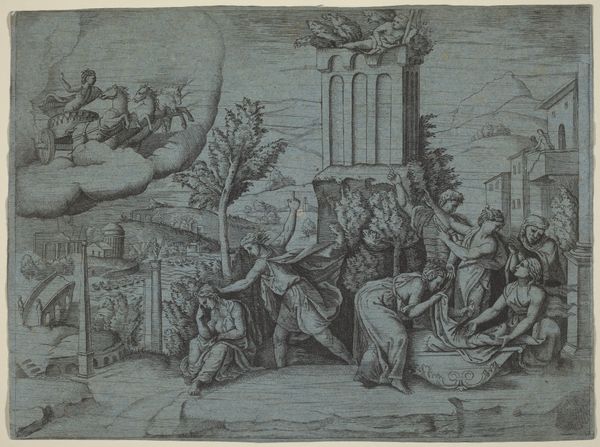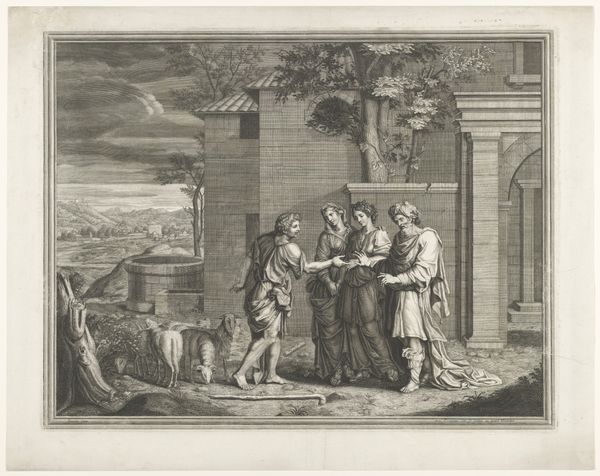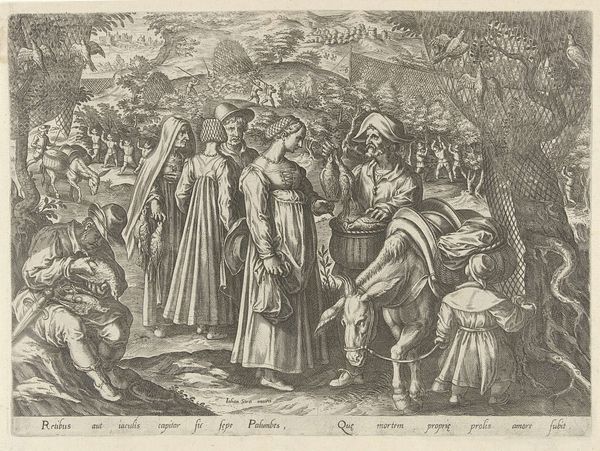
drawing, print, watercolor, ink
#
drawing
#
garden
# print
#
dog
#
landscape
#
flower
#
figuration
#
watercolor
#
ink
#
fruit
#
ink colored
#
sketchbook drawing
#
watercolour illustration
#
genre-painting
#
rococo
Dimensions: height 215 mm, height 310 mm
Copyright: Rijks Museum: Open Domain
Curator: This is "Reuk," or "Smell," a print by Martin Engelbrecht, dating sometime between 1684 and 1756, currently held in the Rijksmuseum. It's rendered with ink and watercolor. It feels so...decorative. Almost like wallpaper with the way it combines text, illustration, and ornate borders. What catches your eye about this piece? Editor: The contrast, definitely. The elaborate clothing and leisurely scene stand out so starkly against the somewhat faded colors and visible lines of the print. It almost looks mass-produced, even though each one would have been colored individually. What does the materiality of the print itself tell us? Curator: It suggests a burgeoning market for luxury goods accessible to a wider segment of society. We see here not just an image of aristocratic leisure, but a reproducible item that brought that imagery into less opulent settings. Consider the labor involved – the etching, the printing, the hand-coloring. Are these individual works of art or commodities within a consumer culture? Does the artist see their artwork as "high art," craftwork, or mass produced material good for commercialization? Editor: That’s fascinating. So, it's less about individual genius and more about the system of production and consumption? Curator: Precisely. How does the material form of this image impact its function, its meaning, and ultimately, its value? It asks us to reconsider how "art" circulated and what kind of social roles did artwork perform beyond pure aesthetic contemplation, and we think about labor, commercial systems, and material availability. Editor: That really changes how I see it. I was so focused on the garden scene itself, but now I’m thinking about the whole economic picture. It feels like this one small object really reveals how art and consumption are intertwined. Curator: Exactly! By shifting our attention to the means of production and the context of consumption, we uncover so much more than just aesthetic preferences. We start understanding the engine that is driving what is made.
Comments
No comments
Be the first to comment and join the conversation on the ultimate creative platform.
